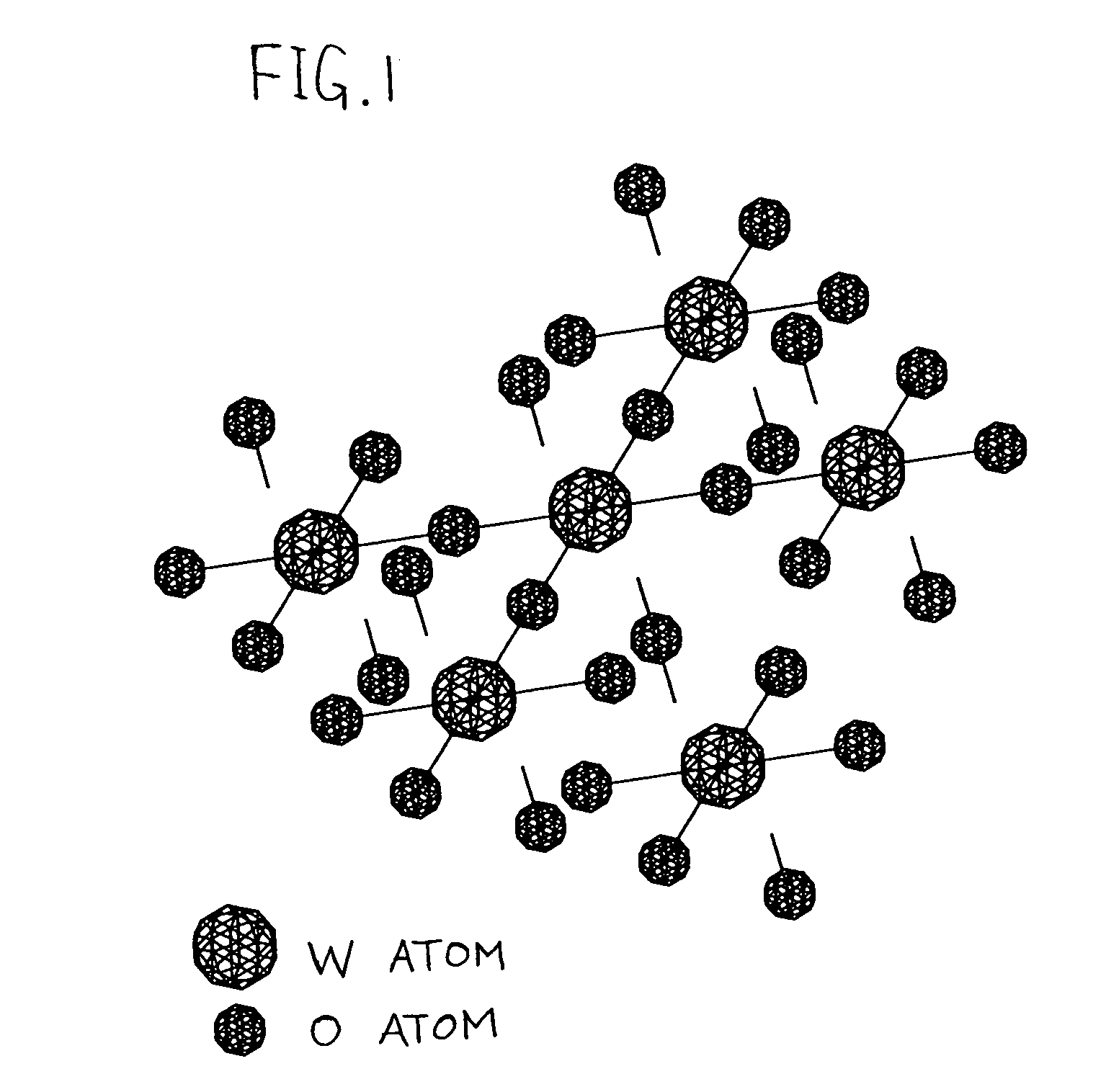Method of separating a release layer from a substrate comprising hydrogen diffusion
a technology of hydrogen diffusion and release layer, which is applied in the direction of electrical equipment, semiconductor devices, instruments, etc., can solve the problems of difficult mass production of tft, difficult growth of glass substrate and quartz substrate, and fragile and heavyness
- Summary
- Abstract
- Description
- Claims
- Application Information
AI Technical Summary
Benefits of technology
Problems solved by technology
Method used
Image
Examples
example 1
[0056]As shown in above described embodiment, the experiment that is demonstrated the fact that thin films are deposited sequentially, and oxide formed at a surface boundary between the metal film and the oxide film are reduced by heat treatment at 400° C. or more, then, the film containing the oxide or a surface boundary between the film and another film is split will be explained hereinafter. In the following experiment, a tungsten film is used as the metal film, a silicon oxide film as the oxide film included in the release layer, and an amorphous silicon film is used as the semiconductor film.
experiment 1
[0057]AN 100 glass substrate (126×126 mm) as a substrate, a tungsten (W) film (50 nm) deposited by sputtering as a metal film, a silicon oxide film (200 nm) deposited by sputtering as a protective film, a silicon oxynitride (SiON) film (100 nm) deposited by CVD as a base film, and an amorphous silicon film (54 nm) deposited by CVD as a semiconductor film are sequentially formed. Thereafter, samples 1 to 6, each of which are heat treated for 1 hour at 500° C., 450° C., 425° C., 410° C., 400° C., and 350° C., and a sample 7, which is heat treated for 1 hour at 350° C. in the hydrogen atmosphere are prepared. Then, separation experiments are respectively carried out to the samples 1 to 7 using a polytetrafluoroethylene tape. FIGS. 4A to 4G are photographs of the experiments.
[0058]As shown in FIGS. 4A to 4G, samples 1 to 4, which are heat treated at 410° C. or more can be separated, however, samples 5 and 6 cannot be separated, that is, a semiconductor film or the like does not adhere t...
experiment 2
[0061]As in the case with the experiment 1, AN 100 glass substrate (126×126 mm) as a substrate, a tungsten film (50 nm) deposited by sputtering as a metal film, a silicon oxide film (200 nm) deposited by sputtering as a protective film, a silicon oxynitride (SiON) film (100 nm) deposited by CVD as a base film, and an amorphous silicon film (54 nm) deposited by CVD as a semiconductor film are sequentially formed. A sample A that is not heat treated, a sample B that is heat treated for 1 hour at 220° C., and a sample C that is heat treated for 1 hour at 500° C., and further, for 4 hours at 550° C. are prepared and TEM analysis is carried out. FIGS. 5A, 5B, and 6A are each TEM image, and FIG. 6B is a view showing the frame format of each of the TEM image.
[0062]As shown in all TEM images, a new film (hereinafter, unknown film) is formed at a surface boundary between the tungsten film and the silicon oxide film. Compared with TEM images each other, only the unknown film of the sample C h...
PUM
| Property | Measurement | Unit |
|---|---|---|
| temperature | aaaaa | aaaaa |
| thickness | aaaaa | aaaaa |
| thickness | aaaaa | aaaaa |
Abstract
Description
Claims
Application Information
 Login to View More
Login to View More - R&D
- Intellectual Property
- Life Sciences
- Materials
- Tech Scout
- Unparalleled Data Quality
- Higher Quality Content
- 60% Fewer Hallucinations
Browse by: Latest US Patents, China's latest patents, Technical Efficacy Thesaurus, Application Domain, Technology Topic, Popular Technical Reports.
© 2025 PatSnap. All rights reserved.Legal|Privacy policy|Modern Slavery Act Transparency Statement|Sitemap|About US| Contact US: help@patsnap.com



